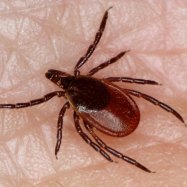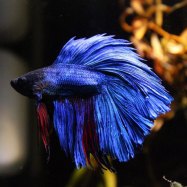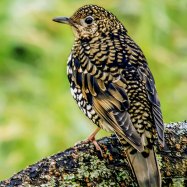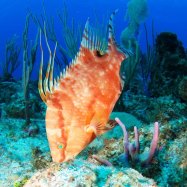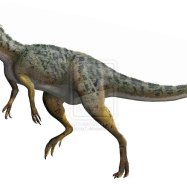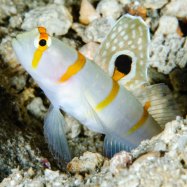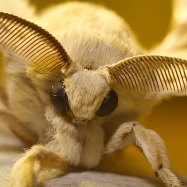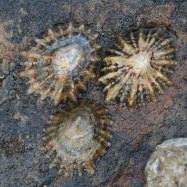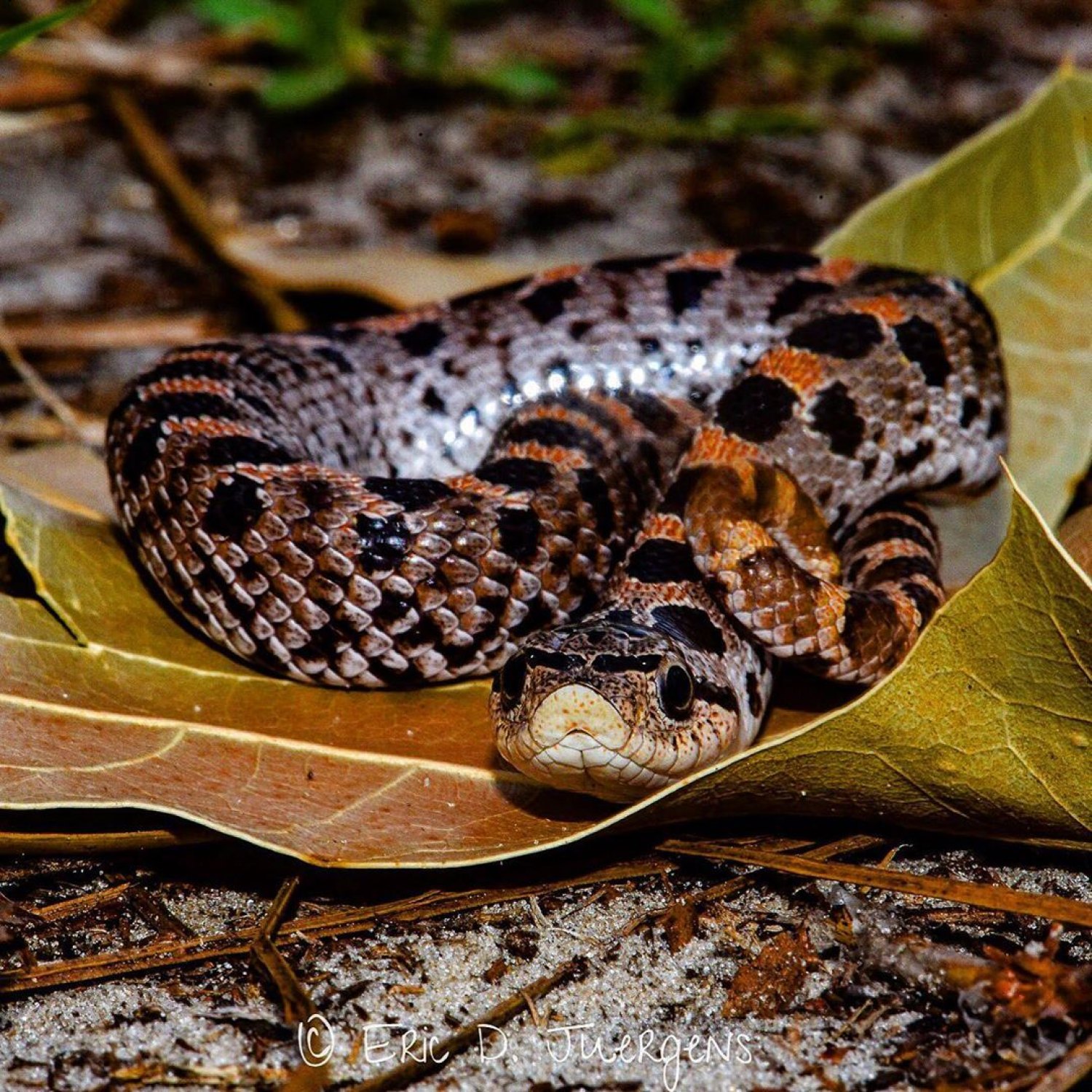
Southern Hognose Snake
Adults can reach a length of 20 to 33 inches (50 to 85 cm)
Meet the charming Southern Hognose Snake, a medium-sized, stout-bodied reptile with a unique upturned snout. These fascinating creatures can grow up to 33 inches and can be found in coastal plains and southern lowlands. Belonging to the Colubridae family, these snakes are known for their harmless yet venomous bite. A must-see for nature lovers! #SouthernHognoseSnake #Nature #Wildlife
Animal Details Summary:
Common Name: Southern Hognose Snake
Kingdom: Animalia
Habitat: Pine flatwoods, sandhills, dry scrub, and oak hammocks
The Curious Case of the Southern Hognose Snake
The Southern Hognose Snake, also known by its scientific name Heterodon simus, is a fascinating species that inhabits the coastal plains and southern lowlands of the southeastern United States. With its unique appearance and behavior, the Southern Hognose Snake has captured the curiosity of many herpetologists and nature enthusiasts alike. In this article, we will delve deeper into the world of the Southern Hognose Snake, uncovering its kingdom, phylum, class, and other interesting facts.An Introduction to the Southern Hognose Snake
The Southern Hognose Snake, also commonly referred to as the Hognose Snake, is a non-venomous colubrid snake that belongs to the genus Heterodon Southern Hognose Snake. This genus is divided into three species: the Western Hognose Snake (Heterodon nasicus), the Eastern Hognose Snake (Heterodon platirhinos), and the Southern Hognose Snake. While all three species share some similar characteristics, the Southern Hognose Snake is unique in many ways.A Taxonomic Breakdown
Before we dive into the specifics of the Southern Hognose Snake, let us first understand its taxonomic classification. The Southern Hognose Snake belongs to the kingdom Animalia, indicating that it is an animal with multicellular organisms and specialized cells. It also falls under the phylum Chordata, which means it has a notochord or a flexible rod that supports its body. Furthermore, it belongs to the class Reptilia, making it a cold-blooded, scaly, egg-laying vertebrate.Within the order Squamata, the Southern Hognose Snake is categorized under the family Colubridae, which is the largest family of snakes worldwide. The Colubridae family includes some of the most common snake species, such as Garter Snakes and Rat Snakes. However, the Southern Hognose Snake is not your average Colubridae species, as it possesses unique qualities that set it apart from the rest Slug.
A Habitat Like No Other
The Southern Hognose Snake is native to the southeastern United States, particularly in the states of Florida, Georgia, South Carolina, and Alabama. Within these states, this species can be found in pine flatwoods, sandhills, dry scrub, and oak hammocks. These habitats provide the perfect environment for the Southern Hognose Snake, as they offer an abundance of prey, shelter, and protection.The Southern Hognose Snake is considered a terrestrial species, meaning it spends most of its time on land. However, they are also agile climbers and can be found hiding in trees or shrubs, especially during the breeding season. Despite its ability to climb, the Southern Hognose Snake is mostly known for its burrowing behavior. They are excellent diggers and create underground burrows or use existing ones for shelter and hibernation.
A Carnivorous Diet
The Southern Hognose Snake is a carnivorous species, meaning it mainly feeds on other animals for sustenance. Its diet includes various prey items such as toads, frogs, lizards, small mammals, and even other snakes. This snake is equipped with rear-fanged teeth, which it uses to inject mild venom into its prey. The venom contains enzymes that help break down the prey's tissues, making it easier for the snake to consume.Interestingly, the Southern Hognose Snake has a unique feeding behavior. When it comes across a potential prey item, it will use its upturned snout to dig through the soil and uncover the prey. It will then use its rear fanged teeth to inject venom and subdue its prey. This behavior is often seen in the Eastern Hognose Snake as well, but the Southern Hognose Snake takes it to the next level. If the prey item happens to be a toad, the Southern Hognose Snake will use its rear fangs to deflate the toad's lungs, making it easier to swallow.
Geographical Distribution and Country of Origin
As its name suggests, the Southern Hognose Snake is predominantly found in the southern regions of the United States. Its range spans from the coastal plains of Florida to the southern lowlands of Alabama. They are also found in parts of Georgia and South Carolina, in habitats such as sandhills and oak hammocks.The Southern Hognose Snake is considered endemic to the United States, meaning it is native to and found exclusively in this country. While it might be tempting to bring one home as a pet, it is important to note that it is illegal to do so without proper permits. Additionally, disrupting the natural balance by removing these snakes from their habitats can have detrimental effects on the ecosystem.
The Many Colors of the Southern Hognose Snake
One of the most striking features of the Southern Hognose Snake is its variable coloration. Typically, this species is light to dark brown or gray with darker blotches along its body. The blotches can vary in shape, size, and color, making each snake unique. In some individuals, the blotches may be absent, giving them a uniform brown or gray appearance.In addition to its base color and blotches, the Southern Hognose Snake also has a light-colored belly, usually yellow or cream. This coloration serves as a defense mechanism, as the snake will often flip onto its back and expose its belly when threatened. This not only makes it appear larger, but it also reveals the bright color, giving predators the impression that it is venomous.
A Medium-Sized, Stout-Bodied Snake
The Southern Hognose Snake is considered a medium-sized snake when compared to other species in its genus. On average, adults can reach a length of 20 to 33 inches (50 to 85 cm), with females being larger than males. Its stout body and upturned snout give it a distinctive appearance, making it easy to identify in the wild.Another unique feature of the Southern Hognose Snake is the presence of keeled scales on its back. These scales have a ridge down the middle, giving them a rough texture and providing excellent traction when burrowing. Additionally, its eyes are larger compared to other Heterodon species, allowing for better vision and hunting abilities.
A Gentle Giant
Despite its fearsome appearance, the Southern Hognose Snake is a docile and harmless species. Unlike other snakes that may strike or bite when threatened, this species will often try to intimidate predators by flattening its neck and hissing. It may also feign death by flipping onto its back and opening its mouth, excreting a foul-smelling musk to deter predators.However, when handled, the Southern Hognose Snake may strike or bite as a last resort. Its rear-fanged teeth are not potent enough to harm humans, but they may cause some discomfort. It is important to handle these snakes with care and respect, as with any wild animal.
In Conclusion
In conclusion, the Southern Hognose Snake is a fascinating and often misunderstood species. From its taxonomic breakdown to its unique feeding behavior and defense mechanisms, this snake continues to captivate the hearts and minds of many. As with all animals, it is crucial to respect their habitats and conserve their populations for future generations to appreciate and admire. So the next time you come across a Southern Hognose Snake, remember to admire its beauty and unique features from a safe distance.

Southern Hognose Snake
Animal Details Southern Hognose Snake - Scientific Name: Heterodon simus
- Category: Animals S
- Scientific Name: Heterodon simus
- Common Name: Southern Hognose Snake
- Kingdom: Animalia
- Phylum: Chordata
- Class: Reptilia
- Order: Squamata
- Family: Colubridae
- Habitat: Pine flatwoods, sandhills, dry scrub, and oak hammocks
- Feeding Method: Carnivorous
- Geographical Distribution: Southeastern United States, including Florida and parts of Georgia, South Carolina, and Alabama
- Country of Origin: United States
- Location: Coastal plains and southern lowlands
- Animal Coloration: Variable, typically brown or gray with darker blotches along the body
- Body Shape: Medium-sized, stout-bodied snake with an upturned snout
- Length: Adults can reach a length of 20 to 33 inches (50 to 85 cm)
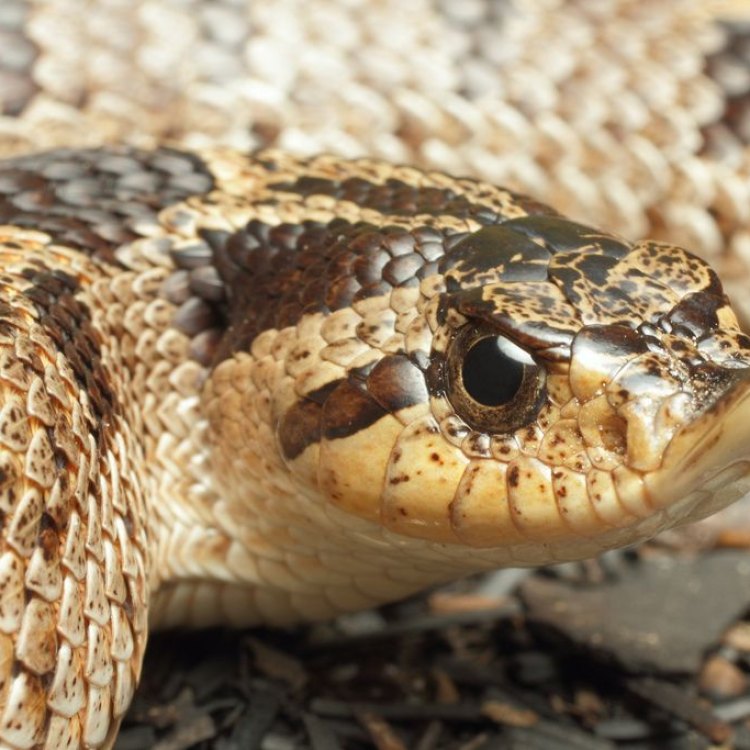
Southern Hognose Snake
- Adult Size: Medium-sized snake
- Average Lifespan: 10 to 15 years in the wild
- Reproduction: Oviparous (lays eggs)
- Reproductive Behavior: Mating occurs in the spring, with females laying eggs in the summer
- Sound or Call: Produces hissing sounds and sometimes plays dead when threatened
- Migration Pattern: Non-migratory
- Social Groups: Solitary
- Behavior: Known for its defensive behavior, including puffing up its body, hissing, and playing dead
- Threats: Habitat loss, road mortality, predation by larger animals
- Conservation Status: Threatened
- Impact on Ecosystem: Helps control populations of small mammals and reptiles
- Human Use: Kept as pets by reptile enthusiasts
- Distinctive Features: Upturned snout, ability to flatten its neck and puff up its body
- Interesting Facts: Southern Hognose Snakes are known for their unique defense mechanism of playing dead, which involves flipping onto their back and convulsing
- Predator: Larger snakes, birds of prey, and mammals
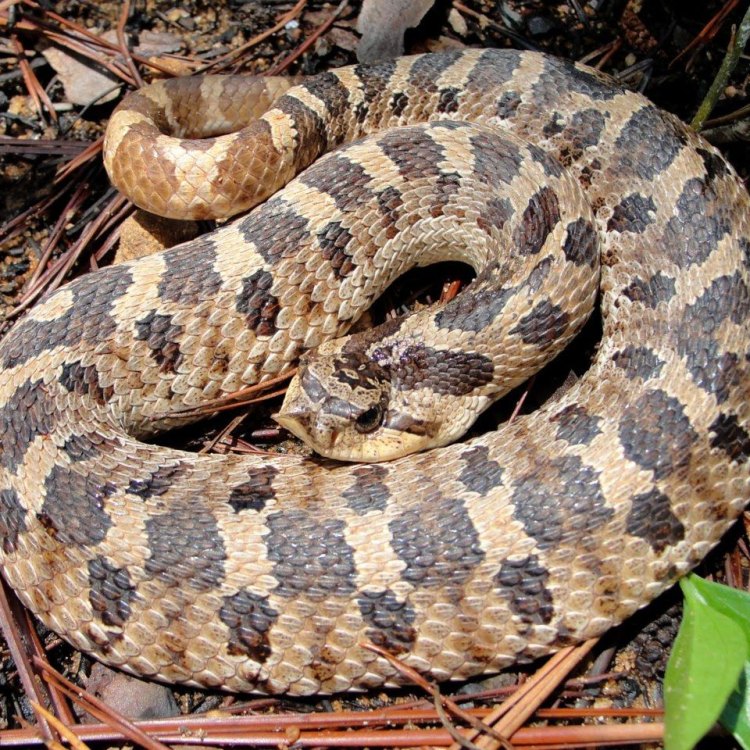
Heterodon simus
The Fascinating Features of the Southern Hognose Snake
The world is full of amazing and diverse creatures, each with their own unique features and behaviors. Among these intriguing animals is the Southern Hognose Snake, a medium-sized reptile with distinct characteristics that make it stand out in the wild.The Southern Hognose Snake, also known as Heterodon simus, is a non-venomous species native to the southeastern United States. It can be found in various habitats, including sandy areas, pine forests, and grasslands PeaceOfAnimals.Com. Let's take a closer look at some of the fascinating features and behaviors of this snake.
Size and Lifespan
The Southern Hognose Snake is a medium-sized snake, with an average adult length ranging from 20 to 33 inches. They have a stout body, and their coloration can vary from plain gray to brown or reddish-brown with darker blotches. While their size may not be as impressive as other snakes, their unique features and behaviors make up for it.In the wild, Southern Hognose Snakes have an average lifespan of 10 to 15 years. However, in captivity, they can live for up to 20 years with proper care. This makes them a long-term commitment for reptile enthusiasts who choose to keep them as pets.
Reproduction and Behavior
The Southern Hognose Snake is an oviparous species, meaning they lay eggs rather than giving birth to live young. Mating for these snakes occurs in the spring, with females laying their eggs in the summer Song Sparrow. They lay their eggs in soft, sandy soil, and the eggs hatch in about two months.One of the most unique and interesting behaviors of the Southern Hognose Snake is their defensive behavior. They are known for being masters of deception, with their ability to puff up their body, flatten their neck, and hiss loudly when threatened. They can also produce a loud hissing sound by expelling air from their enlarged lungs. It's their way of trying to scare off potential predators.
However, if this tactic fails, they resort to their signature defense mechanism – playing dead. They will flip onto their back, open their mouth, and convulse in a dramatic manner. This behavior is where they get their name, as their upturned snout resembles that of a hog. This unique behavior is not only fascinating to watch but also serves as an effective defense against predators.
Threats and Conservation Status
Like many other snake species, the Southern Hognose Snake is facing threats to its survival. One of the major threats they face is habitat loss. As their natural habitats are developed for human use, these snakes are forced to adapt to new environments or are unable to find suitable habitats to survive.Another threat to their population is road mortality. These snakes are commonly found on roads, making them vulnerable to being hit by passing vehicles. This is especially true during their mating season when they are more active.
Predation by larger animals, such as other snakes, birds of prey, and mammals, is also a threat to the Southern Hognose Snake. However, their unique defense mechanism helps protect them from most predators.
Unfortunately, due to these threats, the Southern Hognose Snake is currently listed as threatened on the IUCN Red List. Conservation efforts, such as protected habitat areas and public education, are crucial in preserving this species for years to come.
Impact on the Ecosystem
Snakes often have a bad reputation, but they play a vital role in the ecosystem. The Southern Hognose Snake, in particular, helps control populations of small mammals and reptiles, such as rodents and lizards. This is beneficial to the ecosystem, as these small animals can become pests if their populations get too large.The Southern Hognose Snake also serves as a food source for larger predatory animals, thus contributing to the overall balance of the ecosystem. Therefore, it's essential to protect and preserve this species to maintain a healthy and functioning ecosystem.
Human Use
While they may not be as popular as other snake species, the Southern Hognose Snake is kept as pets by reptile enthusiasts. However, they require specific care, such as a sandy substrate and a varied diet of rodents, to thrive in captivity.If you're considering getting a Southern Hognose Snake as a pet, make sure to do thorough research and purchase one from a reputable breeder. It's essential to provide proper care and a suitable living environment for these snakes to ensure their well-being.
Distinctive Features
Aside from their unique defense mechanism, the Southern Hognose Snake has some other distinctive features that make them stand out in the world of snakes. As mentioned earlier, their upturned snout resembles that of a hog, giving them their common name. This snout, coupled with their ability to puff up their body and flatten their neck, gives them a distinct appearance that is unlike any other snake species.Their coloration, which can range from solid gray to brown with darker blotches, also makes them easily identifiable in the wild. However, it's their behavioral traits that truly set them apart from other snakes and make them a fascinating species to observe.
Interesting Facts
Aside from their unique defense mechanism, the Southern Hognose Snake has some other interesting facts that make them an intriguing species. For example, their natural range is limited to the southeastern United States, specifically Alabama, Florida, Georgia, and Mississippi.These snakes are also known for being quite docile and rarely biting humans unless provoked. However, if they do bite, it's usually a harmless defensive bite with their rear fangs.
One of the most interesting facts about the Southern Hognose Snake is their behavior of playing dead. Not only do they flip onto their back and convulse, but they also release a foul-smelling musk from their cloaca to make the act more convincing. This unique behavior has even earned them the nickname "puff adder."
In Conclusion
The Southern Hognose Snake may not be the most well-known snake species, but it certainly has plenty of unique features and behaviors that make it stand out in the world of snakes. From its defensive behavior to its distinctive appearance, this medium-sized snake is certainly a fascinating creature to observe.However, with threats to its survival, it's crucial to protect and preserve this species. Whether it's through conservation efforts or responsible pet ownership, we all have a role to play in ensuring that the Southern Hognose Snake continues to thrive in the wild for years to come.
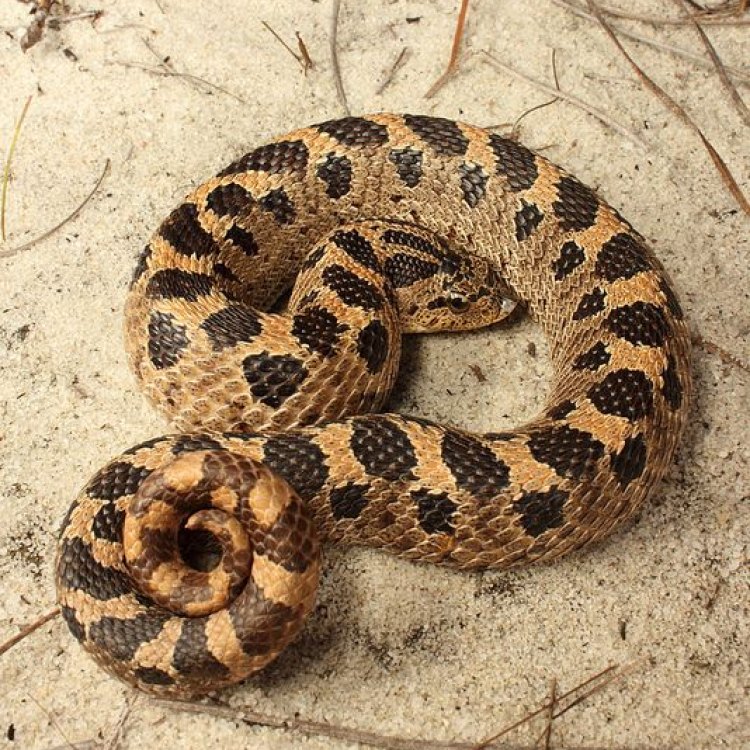
The Curious Case of the Southern Hognose Snake
Disclaimer: The content provided is for informational purposes only. We cannot guarantee the accuracy of the information on this page 100%. All information provided here may change without prior notice.

